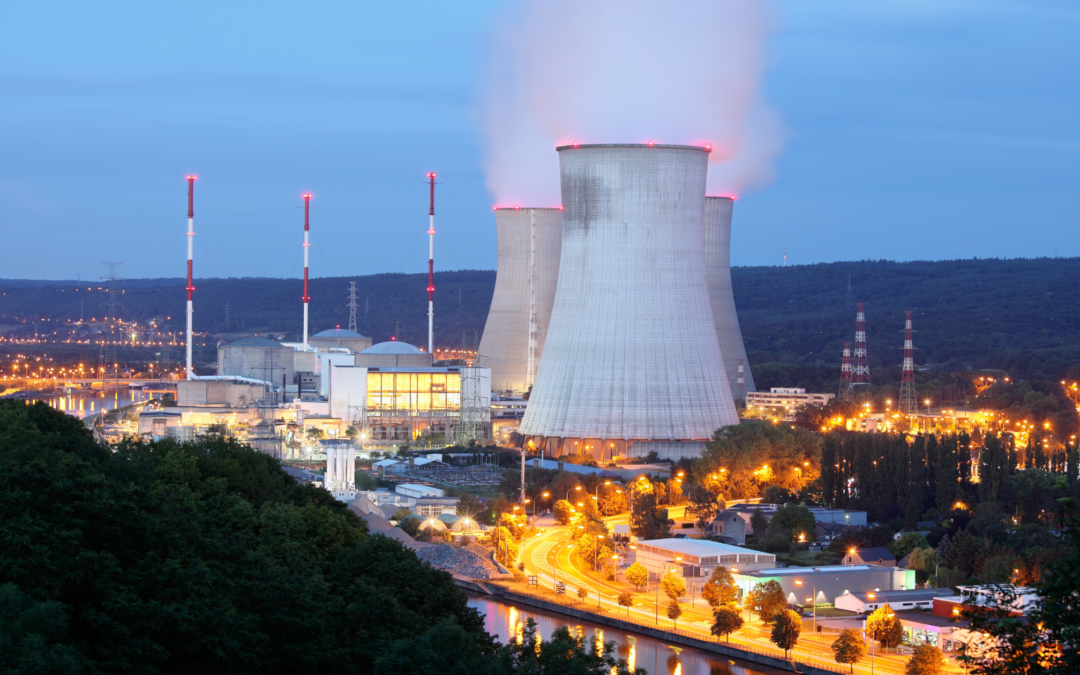Nuclear energy is re-emerging as a strategic solution to the world’s most pressing challenges: climate change, energy security, and skyrocketing electricity demand. Once sidelined due to cost, safety concerns, and political resistance, nuclear is now being viewed with renewed pragmatism. Governments, investors, and engineers are giving it another look; this time, the momentum is global.
The Growth Story
After years of stagnation, nuclear investment is finally picking up. According to the International Energy Agency (IEA), global investment in atomic energy reached approximately $65 billion in 2023, nearly double the level a decade ago. This includes spending on new builds, plant life extensions, and upgrades.
As of February 2025, around 62 nuclear reactors are under construction in 15 countries worldwide. They represent more than 70 GW of capacity, one of the highest levels in the last 30 years, with approximately half of this capacity located in China. China’s success lies in standardized designs and centralized financing, allowing it to deliver reactors in less than five years. A sharp contrast to the over-budget and delayed builds in the West.
In the United States, regulatory reforms and new executive action are laying the groundwork for nuclear expansion. Streamlined licensing processes and the Combined Construction and Operating Licence (COL) framework have lowered barriers to new builds, with some costs supported by the Department of Energy. In May 2025, President Donald Trump signed executive orders to restore U.S. nuclear leadership, targeting a fourfold increase in capacity from 100 GWe to 400 GWe by 2050. The plan includes 5 GWe in reactor uprates and 10 large reactors with completed designs under construction by 2030. One notable project includes plans to build at least 1 gigawatt of advanced nuclear capacity in upstate New York, announced by Governor Kathy Hochul in 2025 as part of the state’s zero-emissions electricity mandate.
In Europe, several countries, including France, Sweden, and the UK, are extending the lifespans of existing plants and planning new ones. Meanwhile, India is revising regulations to encourage nuclear investment, while Japan is working to restart reactors despite continued public concern over waste disposal.
Why The Shift?
Nuclear energy delivers what the energy transition urgently needs- clean, reliable, and scalable power. Unlike solar and wind, nuclear provides steady electricity around the clock, helping stabilize grids as more intermittent renewables come online.
Nuclear power also offers low lifecycle emissions, making it one of the most climate-friendly energy sources. It is comparable to wind and far cleaner than gas or coal. Once built, nuclear plants operate for decades with predictable, low operating costs, offering long-term price stability in volatile energy markets.
Additionally, nuclear is space-efficient and resource-light, requiring far less land and raw materials per megawatt than most renewables. New technologies like small modular reactors promise greater flexibility, faster deployment, and lower upfront costs.
What The Future Holds
Global nuclear investment is projected to rise from $65B to $70B by 2030 under current policy trends, putting capacity on track to grow by 50% to 650 GW by 2050. Under more substantial climate commitments, annual investment could climb to $120B–$150B, potentially more than doubling capacity to over 1,000 GW. SMRs are expected to see accelerated deployment, with investment forecast to increase fivefold by 2030 and installed capacity reaching 120 GW across 1,000+ units by mid-century. China is set to lead the global expansion, likely surpassing the U.S. by 2030, while advanced economies may regain ground through new builds and SMR innovation. A more secure and diversified uranium supply chain and workforce expansion will be essential to realizing this nuclear resurgence.
Meanwhile, AI-driven energy demand is drawing Big Tech into the nuclear space. Amazon has invested $500 million in X-energy, Meta has signed a 20-year atomic power purchase agreement, and Microsoft is exploring the revival of Three Mile Island to power its infrastructure. As digital growth collides with climate imperatives, nuclear rapidly positions itself as the backbone of a reliable, low-carbon energy future.
For nuclear and other power plant valuation services backed by decades of energy sector expertise, Appraisal Economics delivers clarity in a rapidly evolving landscape.

